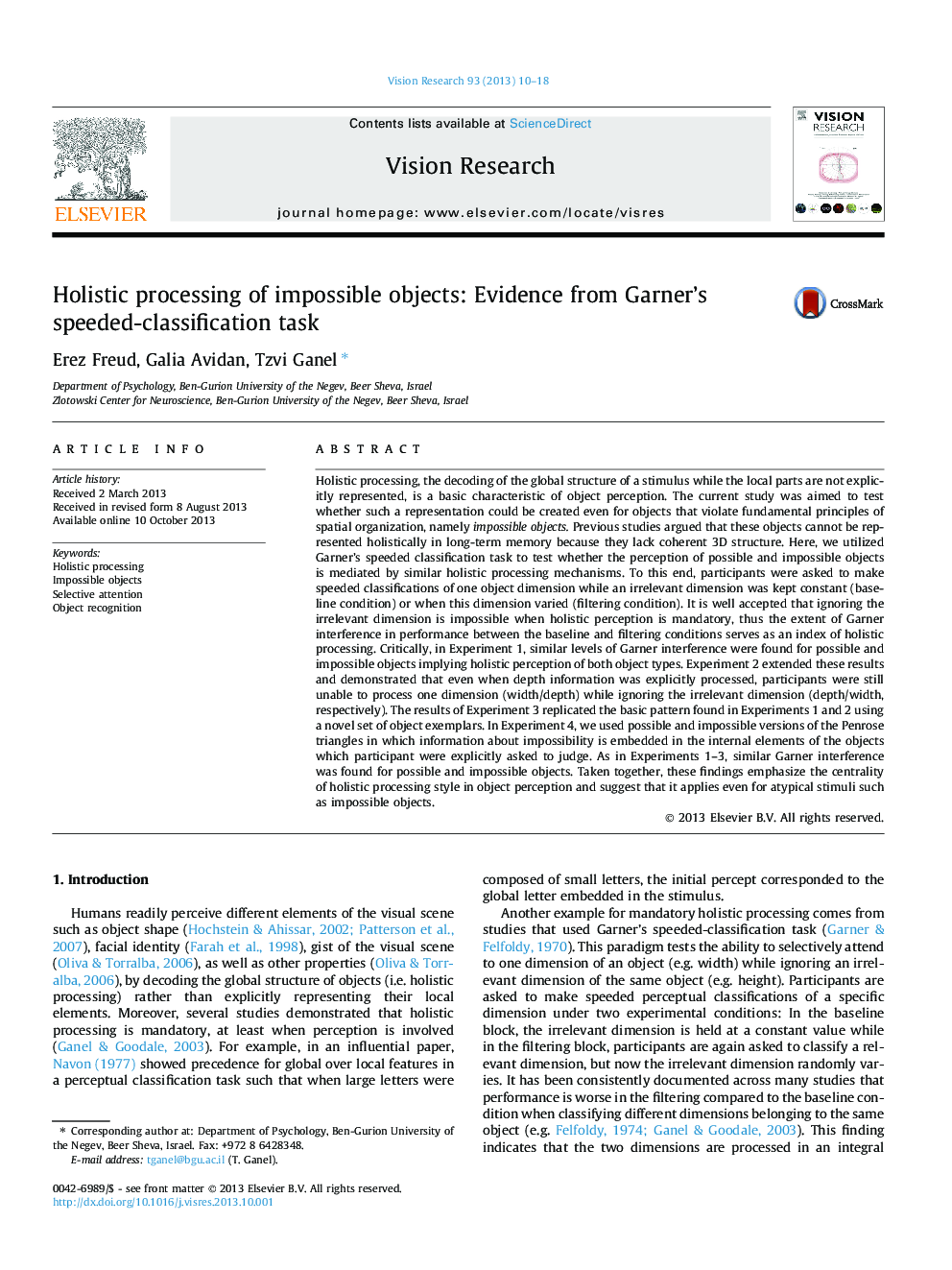| کد مقاله | کد نشریه | سال انتشار | مقاله انگلیسی | نسخه تمام متن |
|---|---|---|---|---|
| 6203523 | 1603201 | 2013 | 9 صفحه PDF | دانلود رایگان |
- We used Garner's task to test if impossible objects are processed holistically.
- Subjects could not ignore irrelevant dimensions of possible and impossible objects.
- Similar effects of Garner interference were found for both object categories.
- Shape is processed holistically even for atypical stimuli as impossible objects.
Holistic processing, the decoding of the global structure of a stimulus while the local parts are not explicitly represented, is a basic characteristic of object perception. The current study was aimed to test whether such a representation could be created even for objects that violate fundamental principles of spatial organization, namely impossible objects. Previous studies argued that these objects cannot be represented holistically in long-term memory because they lack coherent 3D structure. Here, we utilized Garner's speeded classification task to test whether the perception of possible and impossible objects is mediated by similar holistic processing mechanisms. To this end, participants were asked to make speeded classifications of one object dimension while an irrelevant dimension was kept constant (baseline condition) or when this dimension varied (filtering condition). It is well accepted that ignoring the irrelevant dimension is impossible when holistic perception is mandatory, thus the extent of Garner interference in performance between the baseline and filtering conditions serves as an index of holistic processing. Critically, in Experiment 1, similar levels of Garner interference were found for possible and impossible objects implying holistic perception of both object types. Experiment 2 extended these results and demonstrated that even when depth information was explicitly processed, participants were still unable to process one dimension (width/depth) while ignoring the irrelevant dimension (depth/width, respectively). The results of Experiment 3 replicated the basic pattern found in Experiments 1 and 2 using a novel set of object exemplars. In Experiment 4, we used possible and impossible versions of the Penrose triangles in which information about impossibility is embedded in the internal elements of the objects which participant were explicitly asked to judge. As in Experiments 1-3, similar Garner interference was found for possible and impossible objects. Taken together, these findings emphasize the centrality of holistic processing style in object perception and suggest that it applies even for atypical stimuli such as impossible objects.
Journal: Vision Research - Volume 93, 18 December 2013, Pages 10-18
